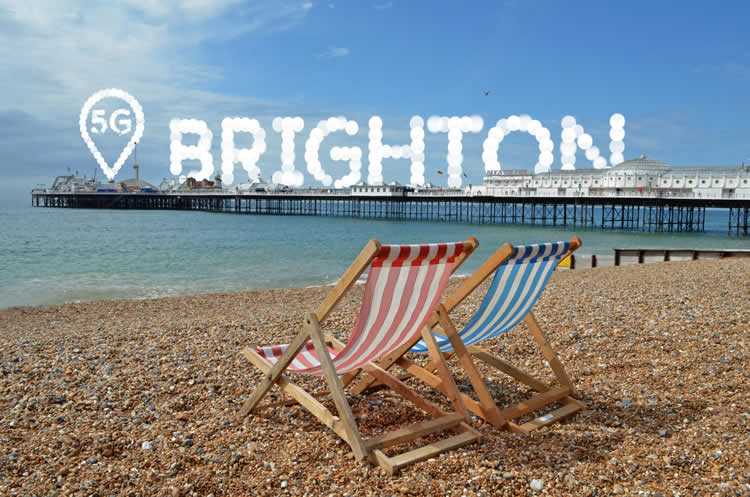
EE and BT have now rolled out 5G to 35 additional towns and cities, bringing the total number of locations they offer 5G in up to 160.
The new locations include significant places like Brighton and Milton Keynes, and also put a focus on tourist hotspots such as Brighton Pier, Exeter Cathedral, Norwich Cathedral, Paignton Sands, Sandbanks Beach in Poole, Swansea Maritime Quarter, Swansea Bay, the V&A Museum in Dundee, York Minster, and York Museum Gardens.
That’s perfect timing with summer around the corner and lockdown restrictions starting to lift, but it’s not just beaches and attractions that are getting a 5G boost, with the full list of new locations including the following:
Aldridge, Alexandria, Aylesbury, Ayr, Barnsley, Biggleswade, Blackburn, Bolton, Brighton, Chester, Colchester, Dundee, Exeter, Grantham, Gravesend, Harrogate, Lincoln, Milton Keynes, Norwich, Paignton, Poole, Portsmouth, Rickmansworth, Runcorn, Southport, Stockton-on-Tees, Stoke-on-Trent, Stratford-upon-Avon, Sunbury-on-Thames, Swansea, Swindon, Widnes, Wigan, Worcester, and York.
It’s worth noting that 5G coverage won’t likely be comprehensive in any of these places yet, but you can expect it to improve over time.
More people and more places
In fact, EE’s 5G network is rapidly improving. In the last year it’s doubled its 5G place count, and it’s set to achieve a milestone of one million active 5G customers this month (April 2021).
EE also has higher 5G availability than all other networks in the UK’s four capital cities (London, Cardiff, Edinburgh and Belfast) according to independent testing from RootMetrics, and with new spectrum acquired at the recent 5G spectrum auction, it’s set to continue improving.
As noted, BT Mobile also offers 5G in the same places, as it owns EE, so if you’re on either network you’re set to benefit.
Of course, the other networks are progressing well too, with Three for example offering 5G in a massive 194 locations across the UK – so there’s plenty of competition.





